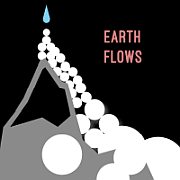About the research
The flow of magma in the Earth’s crust involves flowing viscous magma that interplays with host rock of visco-elasto-plastic rheology through the moving magma/host interface.
The complexity of such systems control the formation of magma conduits of contrasting shapes (dykes, sills, cone sheets, laccoliths, plutons, etc) each of them corresponding to a distinct physical regime of the magma/host rock system.
The processes controlling these systems are neither governed by the viscous flow of the magma nor the deforming host rock alone, but by the mechanical interplay that occurs through the moving interface between them. The aim of the project is to design a novel mechanical model of magma flow through the Earth’s crust that accounts for:
- The dynamics of the flowing melt
- The complex rheology of the deforming host rock
- The moving magma/host rock interface

